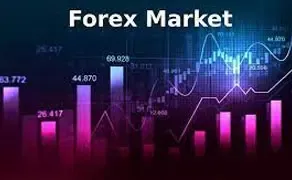Several things You Need to Know About Forex Markets
Foreign exchange, or what is often known as "FOREX" is a currency trading between countries. This global market is the largest financial market in the world, with turnover reaching trillions of dollars traded every day.If you are new to the forex market, understanding Forex Trading Basics can be overwhelming. But you don't need to worry, because this article will help you gain a deeper understanding of how the forex market works and some of the factors that can affect the value of a currency.
What is Forex Markets
Basic of forex
Forex, FX or Forex Exchange means foreign exchange market, that is, the market where currencies are bought and sold worldwide. A currency is a foreign currency (other than the local currency) that can be exchanged at a given exchange rate.For example, in France, the Euro is the national currency while the dollar or the Mexican peso would be a foreign currency.The Forex Exchange or forex market is one of the largest financial markets in the world and is open 24 hours a day, 5 days a week.
FX trades currencies from around the world, but the most popular are the US dollar (USD), the Euro (EUR), the British pound (GBP), the Japanese yen (JPY), and the Swiss franc (CHF). The symbols of the currencies have 3 letters, the first two indicate the country and the third the currency. (eg $USD – United States Dollars)
Forex trading refers to the purchase or sale of one currency for another and therefore they are always traded in pairs.
Every time a person exchanges one currency for another there is a Forex transaction. On a day-to-day basis, this can happen when,
for example, a person is going to travel to the European Union and needs Euros, or to the United States and needs dollars.Depending on the exchange rate on the day you make the transaction, you can receive more or less dollars or euros for the same amount of your local currency.
People who trade forex buy or sell a currency depending on whether they believe the value of the currency will go up or down. The value of a currency can go up or down depending on supply and demand, political situations, etc.
Understanding Currency Pairs and Exchange Rates.
In forex markets, currencies are always traded in pairs. The first currency listed is the base currency, while the second currency is the quote currency. The exchange rate between the two currencies determines how much of the quote currency is needed to purchase one unit of the base currency.For example, if the EUR/USD exchange rate is 1.20, it means that one euro can be exchanged for 1.20 US dollars.Understanding currency pairs and exchange rates is essential for trading in forex markets.
Currencies are classified into:
1. Major Currency Pairs
– These are the most widely traded currencies and account for over 80% of global currency trading. They are highly liquid currencies and include:- EUR/USD – Euro – American Dollar
- NZD/USD – New Zealand dollar – US dollar
- USD/CHF – American Dollar – Swiss Franc
- GBP/JPY – British Pound – US Dollar
- USD/CAD – American Dollar – Canadian
2. Minor currency pairs
These are less liquid currency pairs in which the US dollar is not present, but includes some other major currencies, such as EUR/GBP or GBP/AUD.3. Exotic Currency Pairs:
These are not as strong currencies as the major ones, they trade less frequently and are more volatile. It generally includes the currencies of emerging countries or any that is not among the majors.How Central Banks play a role in the Forex Market
Central banks play a very important role in forex trading. They are responsible for decisions related to monetary policy, which include the circulation of the amount of money and decisions about interest rates. These decisions greatly impact the value of a country's currency.For example, if a central bank raises interest rates, it can make that country's currency more attractive to investors, leading to an increase in demand and a rise in value.Traders closely monitor central bank announcements and decisions to stay informed about potential market movements.
Different Types of Forex Trading Strategies.
There are several types of Forex trading strategies that traders can use to profit from market movements. In the following, are some popular strategies that traders often use to make a profit.- Scalping is a short-term trade, Traders hold positions for only a few seconds or minutes.
- Day trading is a trade that involves opening and closing positions within the same trading day.
- Swing trading involves holding positions for days or weeks, whereas
- Position trading involves holding positions for months or even years.
Risks and Benefits of Forex Trading.
Like any investment, forex trading comes with both risks and benefits. One of the biggest benefits is the potential for high returns, as the forex market is one of the largest and most liquid markets in the world.However, this also means that there is a high level of volatility and risk involved. Traders can Lose money quickly if they do not have a solid understanding of the market and proper risk management strategies in place. It is important for traders to carefully consider their goals and risk tolerance before entering the forex market.


.png)
0 Comments